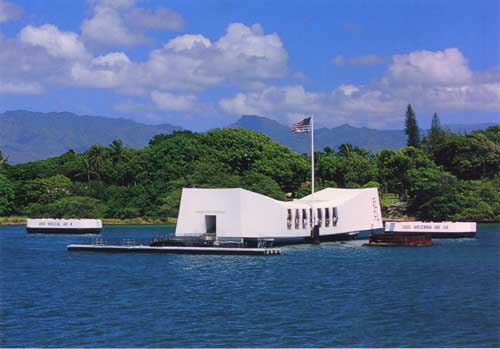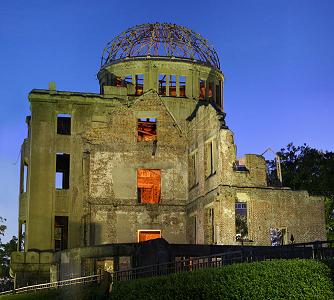World War Two Museums, Memorials, Monuments
Remembering Great Battles, The Holocaust, D-Day, and more
By Stephen Sherman, Dec. 2008. Updated March 22, 2012.
Mainland United States

National WWII Memorial
Washington, DC
The World War II Memorial honors the 16 million who served in the armed forces of the U.S., the more than 400,000 who died, and all who supported the war effort from home. Symbolic of the defining event of the 20th Century, the memorial is a monument to the spirit, sacrifice, and commitment of the American people.
The Second World War is the only 20th Century event commemorated on the National Mall's central axis.
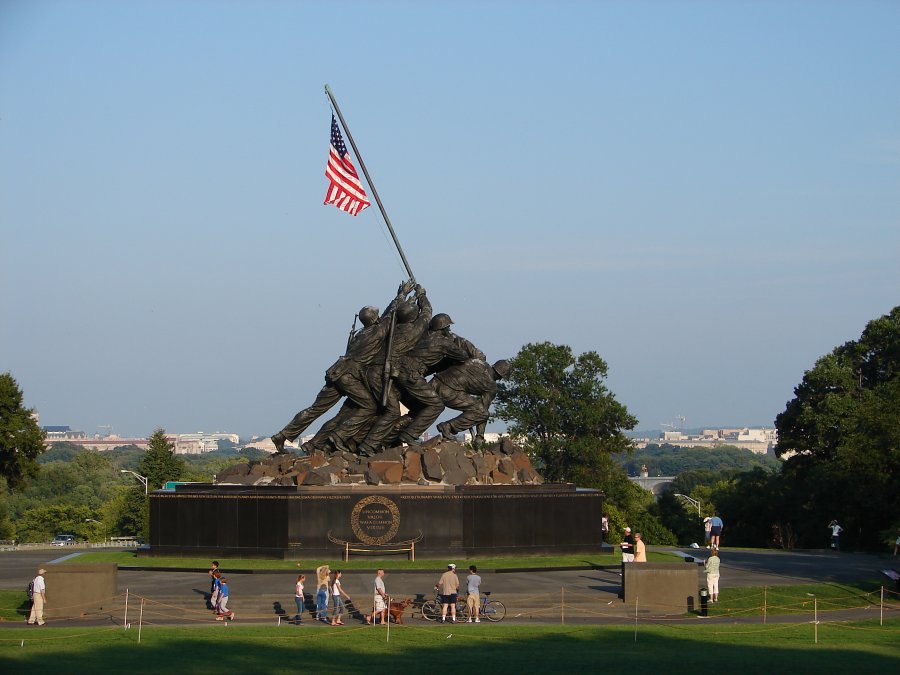
USMC War Memorial - Iwo Jima Sculpture
Washington, DC
The Marine Corps War Memorial stands as a symbol of this grateful Nation's esteem for the honored dead of the U.S. Marine Corps. While the statue depicts one of the most famous incidents of World War II, the memorial is dedicated to all Marines who have given their lives in the defense of the United States since 1775.
The small island of Iwo Jima lies 660 miles south of Tokyo. One of its outstanding geographical features is Mount Suribachi, an extinct volcano that forms the narrow southern tip of the island and rises 550 feet to dominate the area. By February 1945, U.S. troops had recaptured most of the territory taken by the Japanese in 1941 and 1942; still uncaptured was Iwo Jima, which became a primary objective in American plans to bring the Pacific campaign to a successful conclusion.
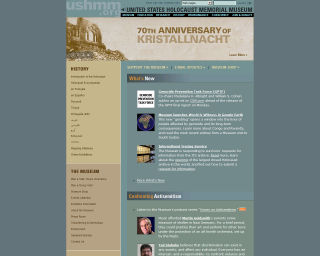
United States Holocaust Memorial Museum
Washington, DC
The Holocaust was the systematic, bureaucratic, state-sponsored persecution and murder of approximately six million Jews by the Nazi regime and its collaborators. "Holocaust" is a word of Greek origin meaning "sacrifice by fire." The Nazis, who came to power in Germany in January 1933, believed that Germans were "racially superior" and that the Jews, deemed "inferior," were an alien threat to the so-called German racial community.
During the era of the Holocaust, German authorities also targeted other groups because of their perceived "racial inferiority": Roma (Gypsies), the disabled, and some of the Slavic peoples (Poles, Russians, and others). Other groups were persecuted on political, ideological, and behavioral grounds, among them Communists, Socialists, Jehovah's Witnesses, and homosexuals.
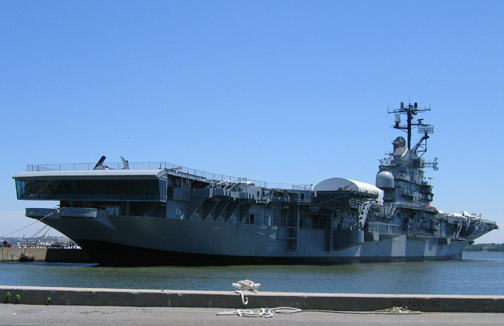
USS Intrepid Sea, Air, Space Museum
New York, NY
The visitor experience focuses on the structures, spaces, and artifacts that tell stories related to the mission to honor American heroes, educate the public, and inspire youth. Discover the collections and exhibitions related to sea, air, space, and life - themes that explore the history of technology - the hardware of those categories - as well as the stories of people behind them - the humanity behind the hardware.
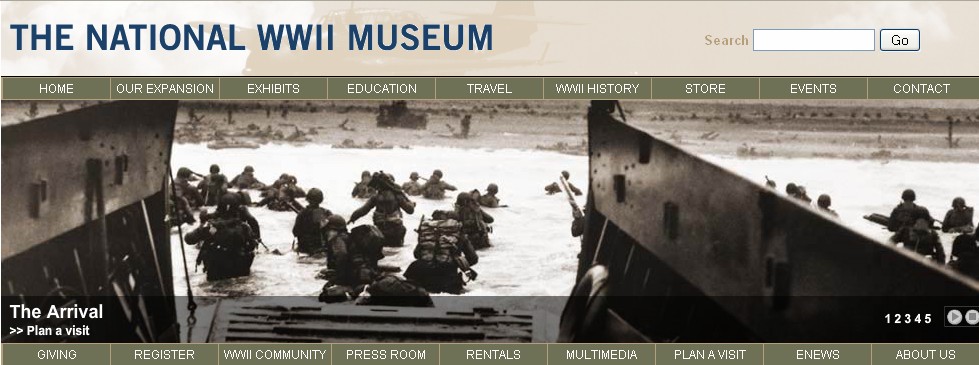
The National WW2 (D-Day) Museum
New Orleans, Lousiana
Dedicated in 2000 as The National D-Day Museum and now designated by Congress as the country's official World War II Museum, this museum illuminates the American experience during the WWII era with personal stories, historic artifacts and interactive displays. From the Normandy invasion to the sands of Pacific Islands and the Home Front, the Museum brings to life the teamwork and courage of the men and women who won the war and changed the world.
The Louisiana Memorial Pavilion showcases essential tools of the war effort, including the famous Higgins landing craft. More than 20,000 boats were designed and built in New Orleans and used in all the amphibious landings of World War II. Dwight Eisenhower credited these boats with winning the war for the Allies. Other artifacts include a Sherman tank, jeeps, halftracks and a fully restored C-47.
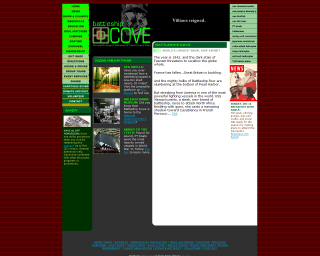
Battleship Cove, USS Massachusetts
Fall River, Massachusetts
The world's largest naval ship exhibit

Museum of Black WWII History
Pownal, VT
This museum is the only one of its kind in the U.S. The museum was created not to glorify war but to document it -- in particular to honor the long-ignored role of African-Americans in the largest worldwide conflict of human history.
To enlighten visitors about the relatively unknown and unappreciated contribution of the 1.1 million African-Americans who served in the U.S. military in World War II. More than a collection and display of objects, the museum is a center for ongoing teaching and research on this broad subject.
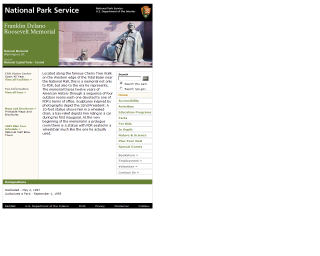
Franklin Delano Roosevelt Museum
Washington, DC
Located along the famous Cherry Tree Walk on the Western edge of the Tidal Basin near the National Mall, this is a memorial not only to FDR, but also to the era he represents. The memorial traces twelve years of American History through a sequence of four outdoor rooms-each one devoted to one of FDR's terms of office. Sculptures inspired by photographs depict the 32nd President: A 10-foot statue shows him in a wheeled chair; a bas-relief depicts him riding in a car during his first inaugural. At the very beginning of the memorial in a prologue room there is a statue with FDR seated in a wheelchair much like the one he actually used.

Korean War Veterans Memorial
Washington, DC
From 1950 to 1953, the United States joined with United Nations forces in Korea to take a stand against what was deemed a threat to democratic nations worldwide. At war's end, a million and a half American veterans returned to a peacetime world of families, homes, and jobs - and to a country long reluctant to view the Korean War as something to memorialize. But to the men and women who served, the Korean War could never be a forgotten war.

USS Alabama
Mobile, Alabama
...from World War II to Iraqi Freedom, at one of America's finest military parks. Here at Battleship Memorial Park you'll walk the decks of a mighty battleship. Go below in a World War II submarine. View cockpits of combat aircraft. You'll also see tanks, a Vietnam River Patrol Boat, and a plane like the one flown by the Tuskegee Airmen.
Wings of Eagles
Elmira, New York
Located in the Finger Lakes region, the Wings of Eagles Discovery Center is home to an Aeronca L3 Grasshopper, a Stearman Kaydet, a Grumman TBM Avenger, a Bell UH-1C Huey chopper, a Douglas B-26B (Invader), and many more famous aircraft: some airworthy, some on display.
Old Rhinebeck Aerodrome
Rhinebeck, New York
Founded over 50 years ago, Old Rhinebeck Aerodrome is a unique aviation museum. It houses some 40 WWI aircraft in the museum, in addition to dozens of antique autos and motorcycles. They actually fly 6 to 10 antique aircraft every Saturday and Sunday between June and October. Including 3 Fokkers; 1 or 2 Sopwiths; the last flying 1909 Bleriot (serial #56) in the USA, if not the world; a Caudron; 2 or 3 Curtiss (which includes a Pusher); 1 or 2 DeHavillands; 1 or 2 Great Lakes; a Hanroit; 1 or 2 Nieuports; 1 or 2 Spads; and 1 or 2 New Standards.
Europe
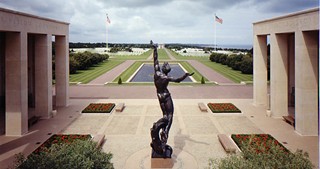
Normandy Cemeteries - American Battle Monuments Commission
Normany, France
The Normandy American Cemetery and Memorial in France is located on the site of the temporary American St. Laurent Cemetery, established by the U.S. First Army on June 8, 1944 and the first American cemetery on European soil in World War II.
The cemetery site, at the north end of its ½ mile access road, covers 172.5 acres and contains the graves of 9,387 of our military dead, most of whom lost their lives in the D-Day landings and ensuing operations. On the Walls of the Missing in a semicircular garden on the east side of the memorial are inscribed 1,557 names. Rosettes mark the names of those since recovered and identified.

Anne Frank House
Amsterdam, Netherlands
One million visitors came to the Anne Frank House in 2007. Despite some renovations, the core of the museum, the Secret Annex, has remained in authentic condition.
The visitors to the museum often leave a reaction. A 48-year old woman writes: 'I visited the Anne Frank House for the first time with a Jewish friend who had not been before either. It was quite an experience for both of us. We were dumb-founded. Each in our own way.'

Auschwitz
Oswiecim, Poland
All over the world, Auschwitz has become a symbol of terror, genocide, and the Holocaust. It was established by the Nazis in 1940, in the suburbs of Oswiecim, a Polish city that was annexed to the Third Reich by the Nazis. Its name was changed to Auschwitz, which also became the name of Konzentrationslager Auschwitz.
The direct reason for the establishment of the camp was the fact that mass arrests of Poles were increasing beyond the capacity of existing "local" prisons. Initially, Auschwitz was to be one more concentration camp of the type that the Nazis had been setting up since the early 1930s. It functioned in this role throughout its existence, even when, beginning in 1942, it also became the largest of the death camps.
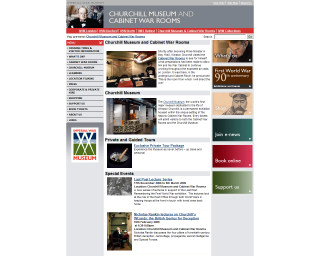
Churchill Museum and Cabinet War Room - Imperial War Museum
London, UK
Shortly after becoming Prime Minister in May 1940, Winston Churchill visited the Cabinet War Rooms to see for himself what preparations had been made to allow him and his War Cabinet to continue working throughout the expected air raids on London. It was there, in the underground Cabinet Room, he announced 'This is the room from which I will direct the war'.

Dachau
Dachau, Germany
On March 22, 1933, a few weeks after Adolf Hitler had been appointed Reich Chancellor, a concentration camp for political prisoners was set up in Dachau. This camp served as a model for all later concentration camps and as a "school of violence" for the SS men under whose command it stood. In the twelve years of its existence over 200.000 persons from all over Europe were imprisoned here and in the numerous subsidiary camps. More than 43.000 died. On April 29 1945, American troops liberated the survivors.
The Memorial Site on the grounds of the former concentration camp was established in 1965 on the initiative of and in accordance with the plans of the surviving prisoners who had joined together to form the Comité International de Dachau. The Bavarian state government provided financial support. Between 1996 and 2003 a new exhibition on the history of the Dachau concentration camp was created, following the leitmitof of the "Path of the Prisoners".
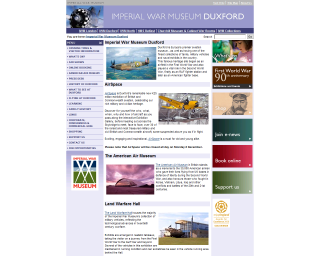
Duxford - Imperial War Museum
Duxford, UK
Duxford is Europe's premier aviation museum - as well as having one of the finest collections of tanks, military vehicles and naval exhibits in the country. This famous heritage site began as an airfield in the First World War and also played a vital role in the Second World War, firstly as an RAF fighter station and later as an American fighter base.
AirSpace is Duxford's remarkable new £25 million exhibition of British and Commonwealth aviation, celebrating our rich military and civilian heritage.

Danish Resistance Museum (Frihedsmuseet)
Copenhagen, Denmark
The museum tells the story of Danish resistance during Nazi occupation 1940-1945. It springs from an exhibition called Fighting Denmark, arranged by the Resistance Council in the summer of 1945. In 1957 a permanent museum was opened on the present location.
The exhibition proceeds chronologically as an illustration of how the resistance movement developed within the ever-changing framework provided by Danish society and the tides of battle. Different types of resistance work are presented.
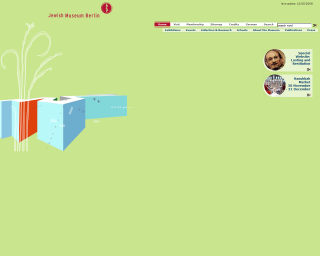
Jewish Museum
Berlin, Germany
The Jewish Museum Berlin takes its visitors on a journey through two millennia of German-Jewish history. Through pictures and texts, art and objects from daily life, media terminals and interactive elements, the historical permanent exhibition tells of Jewish culture in Germany and the difficult relationship between Jews and non-Jews.
The architecture of the museum is deliberately difficult to navigate, full of odd angles and abrupt, blank walls. More here on the design.
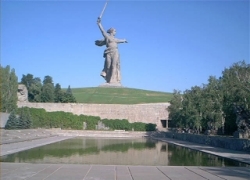
Stalingrad and Mamayev Hill
Volgograd, Russia
"THE OFFICIAL WEBSITE OF THE STATE CULTURAL INSTITUTION HISTORICAL MEMORIAL COMPLEX TO THE HEROES OF THE STALINGRAD BATTLE AT MAMAYEV HILL"

Dutch Resistance Museum (Verzetsmuseum)
Amsterdam, Netherlands
The Dutch Resistance Museum, chosen as the best historical museum of the Netherlands, tells the story of the Dutch people in Word War II. How did Dutch people respond to the Nazi occupation? Who resisted? Why, and how? You'll see, hear en read fascinating stories about the exceptional, as well as about everyday life. Education is a core task for the museum. Some fifteen thousand children visit the museum each year.

